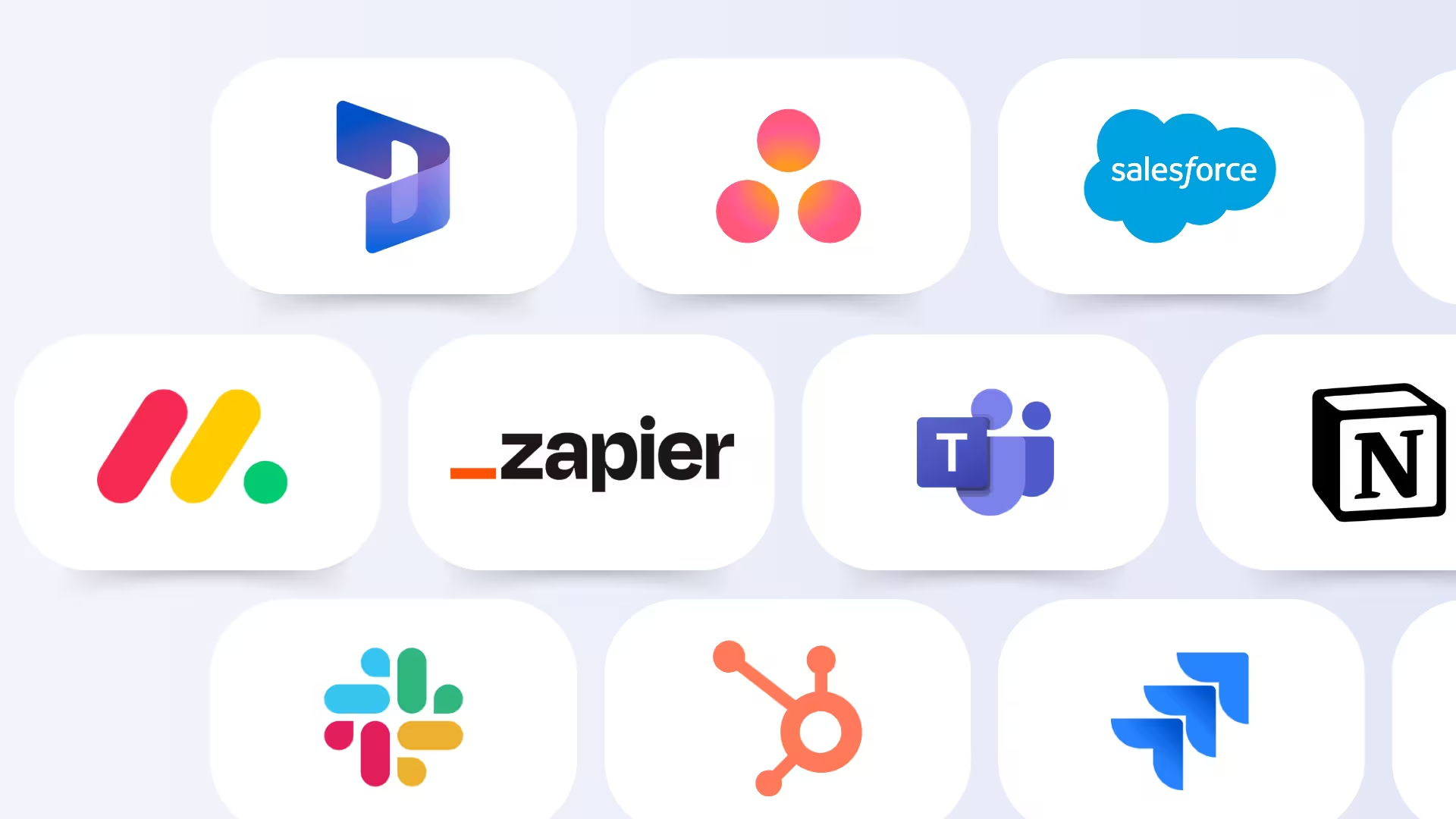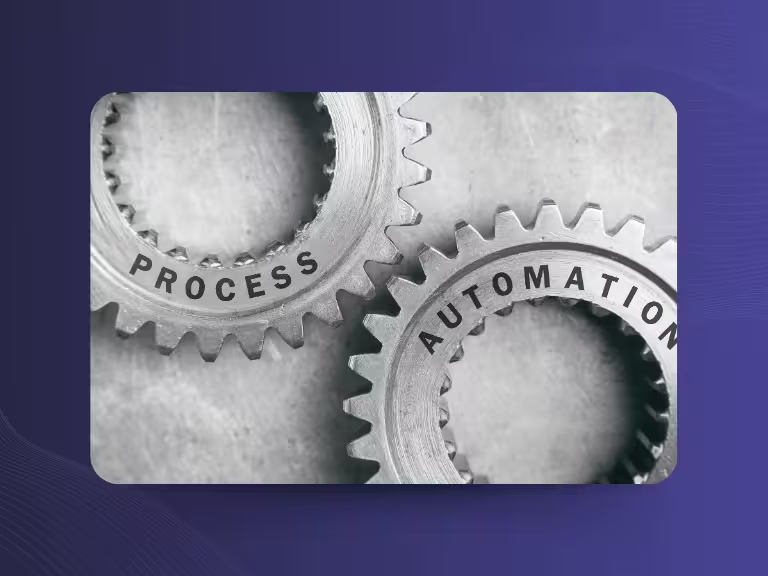Table of Contents
Why Process Automation is Becoming Essential for Businesses
Imagine if your employees could finally focus on truly important tasks instead of spending hours daily on repetitive activities. That's exactly what process automation makes possible. It describes the use of technology to run recurring business processes without manual intervention.
In the digital age, businesses face enormous challenges: competitive pressure is rising, customers expect faster responses, and costs need to be reduced simultaneously. This is where automation comes into play. It helps work more efficiently, reduce errors, and free up valuable resources.
The benefits of process automation extend far beyond simple time savings. You'll learn how it reduces costs, improves quality, and makes your business more agile. At the same time, we'll look at what challenges can arise during implementation and how various industries are already successfully automating.
The Most Important Benefits of Process Automation at a Glance
Cost Savings and More Efficient Resource Utilization
The most obvious benefit lies in cost savings. When processes run automatically, you need less staff for repetitive tasks. Studies show that companies can reduce their personnel expenses by up to 30 percent without compromising quality.
But it's not just about personnel costs. Automated workflows also drastically reduce rework. For example, when invoices are automatically processed and forwarded to the right system, time-consuming corrections are eliminated.
A practical example: In accounting, RPA systems (Robotic Process Automation) can scan invoices, extract data, and enter it directly into the accounting software. What used to take hours is completed in minutes. In customer service, chatbots can answer frequent inquiries before an employee needs to intervene.
Time Savings and Acceleration of Business Processes
Time is worth its weight in gold in the business world. Digital workflows accelerate processes by an average of 20 to 40 percent. This means faster decisions, more satisfied customers, and more flexibility for your team.
This benefit is particularly evident in approval processes. Instead of documents physically moving from desk to desk, they can be digitally forwarded to the responsible people. Automatic reminders ensure nothing gets overlooked.
A real-world example: Tools like Sally can automatically transcribe meetings and forward important information directly to CRM systems. This saves you from manually transferring conversation notes and allows you to focus fully on the conversation.

Error Reduction and Quality Improvement
Humans make mistakes – that's completely normal. Machines, however, work precisely and consistently. Automated processes can reduce administrative errors by over 50 percent, as studies by Deloitte show.
Think about data entry: When information is manually transferred from one system to another, typos quickly creep in. Automated interfaces transfer data exactly and without loss.
Standardization through automation also leads to consistently high service quality. Every customer receives the same treatment, regardless of which employee is currently on duty. This sustainably increases trust and customer satisfaction.
Agility and Resilience Through Flexible Automation
Markets change quickly, and businesses must be able to keep up. Flexible automation solutions enable you to respond quickly to new requirements. Scalable systems grow with your business.
AI-powered systems can even learn independently and adapt to changing conditions. For example, when customer inquiries increase, automatic systems can activate additional capacity.
This adaptability makes businesses more resilient to external influences. During the COVID-19 pandemic, automated companies were able to switch to remote work more quickly and maintain their business processes.

Complementary Perspectives: Long-term Effects and Challenges
Impact on Employees and Corporate Culture
Automation fundamentally changes the working world. Monotonous tasks disappear, while new competencies become more important. Your employees can focus on creative and strategic tasks that create real added value.
However, this change also brings challenges. Some employees fear for their jobs or feel overwhelmed by new technologies. This is where leadership is required: continuing education and transparent communication help get everyone on board.
Corporate culture becomes more digital and data-driven. Decisions are based more on facts than gut. This can be very enriching but also requires a rethinking by all involved.
Change Management – How Companies Successfully Shape Transformation
The best technology is useless if people don't go along with it. Successful change management begins with transparency. Explain to your employees why automation is important and how they can benefit from it.
Practical tips for implementation: Start with small pilot projects that show quick results. Involve your employees in selecting and designing automation solutions. Offer regular training and create open communication channels.
Fears and resistance are normal and justified. Take them seriously and address them. Show concretely what new opportunities arise and how work changes for the better.
Technological Challenges and Security Aspects
Integrating new automation solutions into existing IT systems can be complex. Different platforms must communicate with each other, and data quality must be right. Modular solutions and standardized APIs help overcome these hurdles.
Security is a critical aspect. With increasing automation, the risk of cyberattacks also rises. Robust security measures are therefore indispensable: access controls, encryption, and regular security audits protect your data and processes.
AI systems can help detect and close security gaps early. They continuously monitor system activities and sound alarms when something unusual happens.
Industry-Specific Applications and Practical Examples
Process Automation in the Financial Sector and Accounting
The financial sector is a pioneer in automation. Compliance processes run automatically, reports are created independently, and risks are continuously monitored. This not only saves time but also reduces the risk of regulatory violations.
An impressive example: Insurance companies use RPA for claims processing. The system can automatically categorize damage reports, directly process simple cases, and forward complex cases to the right department. What used to take days is often completed in just a few hours.

Automation in Healthcare
In healthcare, it's about human lives – precision is particularly important there. Automated patient data management reduces errors and improves treatment quality. Appointment scheduling runs digitally and documentation is created automatically.
This automation significantly relieves medical staff. Doctors and nurses can focus on what really matters: patient care.
Manufacturing Industry and Industry 4.0
The manufacturing industry is experiencing a revolution through automation. Smart factories combine robotics with Internet of Things (IoT) and create fully networked production environments. Machines communicate with each other and independently optimize their processes.
Preventive maintenance becomes possible through sensors and AI. Instead of waiting until a machine fails, problems can be identified and resolved in advance.
Retail and Customer Service
In retail, automation is revolutionizing both warehousing and customer service. Automated warehouse systems ensure optimal inventory management, while chatbots and AI assistants make customer service available around the clock.
Personalized customer approach becomes possible through automated data analysis. Customers receive tailored offers based on their purchasing behavior. Sally can, for example, automatically analyze sales conversations and transfer important customer information directly to the CRM system.
Conclusion and Action Recommendations: Getting Maximum Value from Process Automation
The benefits of process automation are clear: You save costs and time, reduce errors, and make your business more agile. At the same time, you improve the quality of your services and customer satisfaction.
However, successful automation requires a holistic approach. Technology alone is not enough – you must also bring your employees along, adapt corporate culture, and consider security aspects from the beginning.
Concrete action recommendations for implementation: Plan change management early and communicate openly with your employees. Invest in continuing education and create new career opportunities. Pay attention to robust security concepts and choose industry-specific solutions.
Start small with pilot projects that show quick results. Learn from experience and scale gradually. This way you minimize risks and increase acceptance among your employees.
Process automation is not a trend but a necessity for future-ready businesses. Those who don't automate today will fall behind in competition tomorrow. The time to act is now – your business and your employees will thank you.

Try meeting transcription now!
Experience how effortless meeting notes can be – try Sally free for 4 weeks.
Test NowOr: Arrange a Demo Appointment

.avif)



